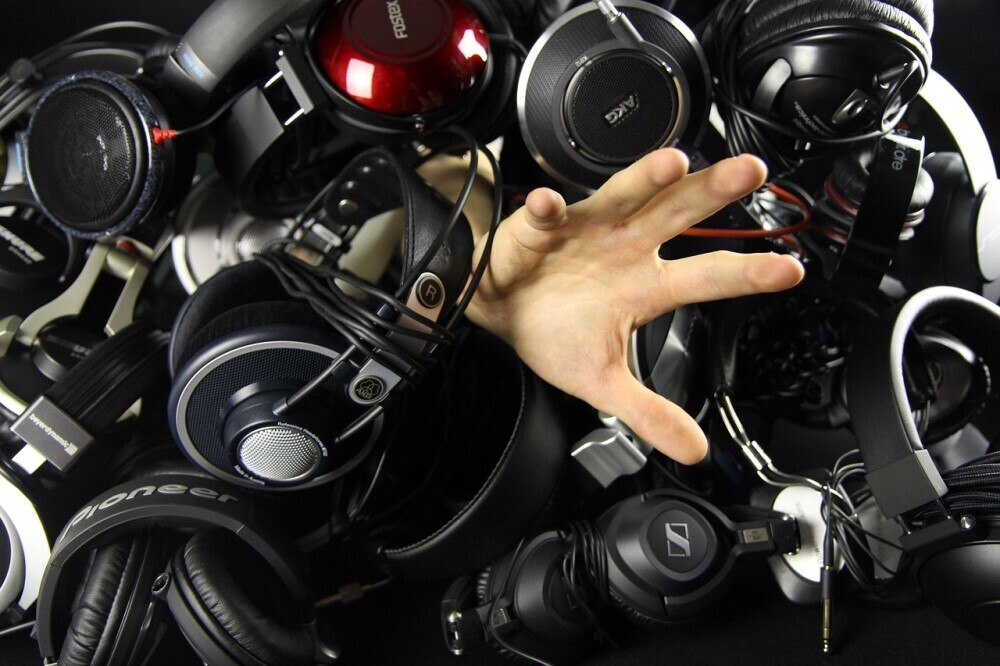Gaming has changed significantly over the last few years, and having the right headset can greatly improve your experience. Whether you’re into intense shooters, cozy RPGs, or just want to chat clearly with friends, the audio quality, comfort, and features in today’s high-tech gaming headsets really move things to the next level. Since picking the right one can feel a bit overwhelming with all the models out there, I’m walking you through what you need to know to lock in the perfect headset for your gaming needs.

Why Gaming Headsets Matter
Audio can make or break your gaming experience. A well-designed headset doesn’t just pump crisp sound; it also helps you coordinate with teammates, avoid distractions, and get totally lost in the game world. Modern games often feature detailed sound design, where being able to pick up tiny audio cues (like footsteps behind you or the swoosh of distant spells) can actually change how you play. Plus, if you’re gaming in a shared space or late at night, having your own private audio bubble is pretty handy.
The gaming headset world has come a long way from those basic earphones or crackly old mics. Today’s options are loaded with surround sound, noise cancelling, wireless tech, customizable LEDs, and more. Even esports pros and streamers rely on high-end headsets as a key part of their setup. Whether you’re brand new or upgrading from a budget model, investing in a quality headset pays off in both fun and function.
Core Types of Gaming Headsets
When shopping, most headsets fall into a few main categories based on how they connect and deliver sound. Getting familiar with these types helps narrow down your choices.
- Wired Headsets: These connect through a standard 3.5mm audio jack or USB. Wired headsets usually have near-zero lag and don’t need charging. They’re a super dependable option, especially for competitive games.
- Wireless Headsets: Using Bluetooth or a USB dongle, these ditch the cables for more freedom to move. They’re convenient for couch gaming or multitasking, but do rely on battery life, so keeping a charging cable nearby is smart.
- Surround Sound Headsets: Some headsets offer 7.1 simulated surround sound, which helps with spatial awareness in games. It’s pretty helpful for picking up where enemies or environmental sounds are coming from.
- Open-Back vs. Closed-Back: Closed-back headsets seal out outside noise, while open-back ones allow some sound in and out, offering a more natural audio feel. Closed-back is best for noisy environments or if you don’t want the whole house hearing your game.
Choosing Your Gaming Headset: Key Features to Check
Not all headsets are created equal, and picking one just because it looks cool can lead to headaches (literally and figuratively). So, here’s what I focus on when testing or buying a new headset:
- Sound Quality: Clear highs, punchy bass, crisp mids; the better the sound, the more immersive your game will feel. Some headsets even let you tweak equalizer settings through companion apps.
- Microphone Quality: Clear game chat is super important. Look for headsets with noise-cancelling, mics, and check reviews for whether your voice comes through loud and clear or sounds muffled.
- Comfort: Plush earcups, lightweight frames, and adjustable headbands mean you can play for hours without sore ears or headaches. I always check for memory foam or breathable materials, especially if gaming sessions run long.
- Build Quality and Durability: Metal reinforced bands or thick plastics survive rage quits and everyday use much better. Flip to mute mics and detachable cables are also pretty useful.
- Battery Life (for wireless): Nothing kills the vibe like your headset dying midmatch. Most wireless headsets can last anywhere from 4 to 20 hours per charge, depending on what you buy, but the longer the better if you’re gaming a lot.
- Compatibility: Some headsets work only on PC, while others are cross-platform (PC, PlayStation, Xbox, Switch, and even mobile). Double check this before buying; nothing’s worse than realizing your new gear doesn’t connect to your favorite system.
- Price and Warranty: There’s a wide price range depending on features, from budget picks to premium setups. Warranties and customer support can give extra peace of mind, especially for big-ticket items.
A Quick Guide: Steps to Finding the Best Headset for You
The search for the right headset gets a lot easier if you break it down into a few manageable steps:
- Identify Your Primary Gaming Platform: Check if you’re mostly on PC, console, or both. Some headsets come with platform-specific features, so platform compatibility makes a difference.
- Set Your Budget: Decide how much you want to spend before getting eye-catching features you might not even use. There are solid picks in just about every price range.
- Think About Your Gaming Environment: If you’re gaming in a quiet room, open-back might work. Noisy living room or shared space? Closed-back with noise-cancelling is probably a better bet.
- List Your Must-Haves: Make a quick list of dealbreakers and “nicetohaves”—for example, wireless for mobility, a flip-up mic for streaming, or RGB lights for a bit of flair.
- Check Reviews and Try Them On (if Possible): Online reviews and hands-on impressions are super helpful. If you get a chance, trying on headsets in-store helps you spot comfort issues right away.
Common Challenges and How to Handle Them
Even once you’ve picked a headset, a few issues can pop up. Here’s how I handle the most common ones:
- Audio Drops or Static: Wireless models sometimes run into random drops if there’s a lot of tech nearby. Resetting your dongle or switching to a different USB port often fixes this. For wired models, check for loose connections.
- Uncomfortable Fit: If your headset pinches or gets sweaty quickly, swapping the ear cushions (if possible) or adjusting the headband can help. Some brands sell replacement pads if the originals wear out or just aren’t working for you.
- Mic Not Working Right: Sometimes, a firmware update or quick settings tweaks can fix a crackly or muted mic. Double-check input settings on your device, too; sometimes it’s a software thing and not the mic itself.
Battery Life Issues (For Wireless)
Wireless headsets rely on a battery that usually lasts anywhere from 4 to 20 hours. If you burn through charge too quickly, turning off extra features like RGB lights or limiting wireless range can help. Charging during downtime is a simple way to stay powered up between matches.
Compatibility Issues
Every platform can have slightly different requirements. For example, Xbox often needs specially licensed headsets or adapters, while PC gamers get plenty of plug-and-play options. Checking compatibility up front avoids a lot of frustration down the line.

Cool Features That Make a Gaming Headset Worth It
Headset technology has added a ton of neat features that bring real benefits to daily play. Here’s a handful worth having on your radar:
- Active Noise Cancelling: This is especially helpful if you share space with others. It blocks out background noise, letting you really sink into the game.
- Customizable Sound Profiles: Some headsets let you save multiple EQ presets, one for shooters, one for music, one for RPGs, and so on.
- Detachable or Retractable Microphones: Great if you switch between gaming and just listening to music.
- On-Headset Controls: Changing volume, muting your mic, or toggling surround sound right from the headset means less fiddling midgame.
- RGB Lighting: While not for everyone, the next-level cool factor is real. Customizable lighting can fit in with your rig’s other RGB gear.
- Swappable Ear Pads and Headbands: Being able to change out parts gives a boost to overall comfort and helps extend your headset’s lifespan.
RealWorld Scenarios: Picking Headsets for Different Types of Gamers
- Competitive FPS Players: Clear positional audio is super important. Look for a headset with surround sound and a noise-cancelling mic so your callouts are clear and you can concentrate without distractions.
- Casual or SinglePlayer Gamers: Comfort and long battery life matter if you’re marathoning story games. Plush earcups and wireless freedom go a long way here.
- Streamers and Content Creators: You’ll want something that looks sleek on camera and picks up clear voice audio. Flip to mute or detachable mics and RGB effects appeal to a lot of streamers.
- Multiplatform Fans: If you’re always switching between PC, console, or handheld, get a headset designed for easy swapping. Bluetooth and wired dual-mode is worth checking out.
Answers to Common Gaming Headset Questions
Here are a few questions people usually ask when they’re hunting for a new gaming headset:
Question: Do I need surround sound for gaming?
Answer: It’s not required, but surround sound does help a lot with games where directional audio matters. If you play shooters or games with busy sound stages, it’s really useful.
Question: What’s the best way to clean my headset?
Answer: Regularly wipe down the earcups and headband with a soft, slightly damp cloth. For deeper cleans, some models let you remove the ear pads and wash them separately. Avoid submerging any electronic parts.
Question: Wired or wireless, which is better?
Answer: Both have perks. Wired headsets offer zero lag and never need charging, while wireless lets you move around or game from your couch. Pick what best fits your gaming setup and habits.
Getting the Right Gear for Your Game Style
A high-tech headset personalized to your needs can totally upgrade your gaming life. Audio is more than just background; it pulls you into the world, gives a boost to your skills, and lets you connect smoothly with friends. Spend a little time researching and thinking about what features matter most to you, and you’ll end up with a setup that sounds and feels just right for your favorite games.
No matter your budget or game style, there’s an awesome headset out there that fits. Once you track it down, you’ll wonder how you gamed without it.
